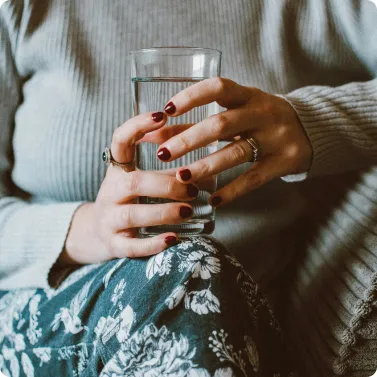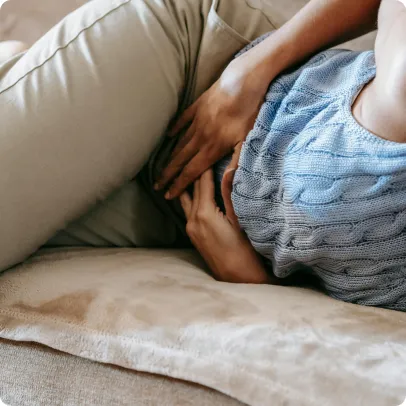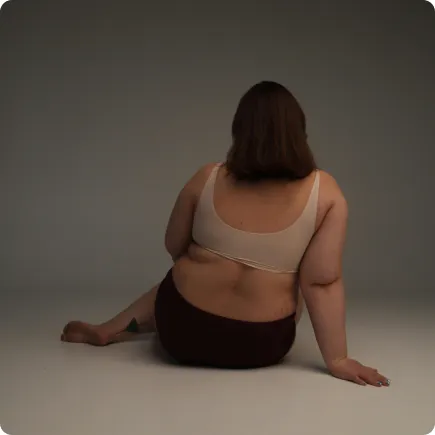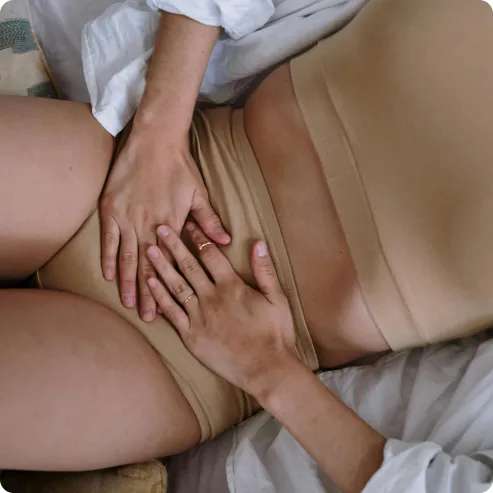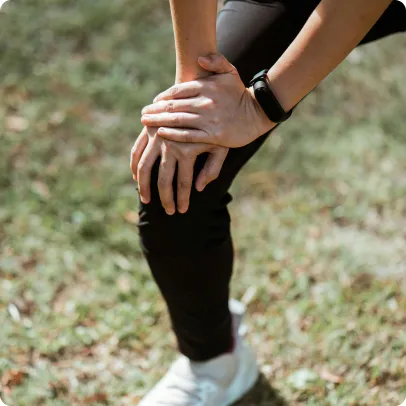
Menopause Breast Pain and Tenderness

What is breast pain and tenderness in menopause?
Breast pain is incredibly common, affecting up to 70% of women over the course of their lives. While it becomes less common after menopause, it can affect women of any age and should always be taken seriously. The good news is that sore, tender breasts are typically benign and often transient. It can usually be treated with home remedies and over-the-counter medications. If you are dealing with breast tenderness during menopause and looking for some help, this guide is for you.
What causes breast pain and tenderness in menopause?
Fluxes of estrogen and progesterone are the culprit behind cyclical breast tenderness—but let’s dive a little deeper. Just before ovulation, estrogen levels peak which contributes to enlargement of the breast ducts. About a week before a woman's period, progesterone also peaks which also causes milk glands to grow. Additionally, it causes you to retain more water weight, temporarily enlarging your breasts. The collective effect of these changes is to leave your breasts swollen and tender. Cyclical breast pain tends to be an ache or tenderness spread over both breasts.
Non cyclical breast soreness can be caused by many different underlying issues. These include an infection, cyst, or tumor in the breast, an ill-fitting bra, and conditions affecting the lungs, neck, and ribs. While it manifests differently for different people, non cyclical breast pain tends to be sharper, more localized, ongoing and may occur on just one side. It’s very important you speak with your healthcare provider regarding any non cyclical breast pain so they can evaluate you in person.
During your reproductive years, breast tenderness is a normal part of PMS. It’s the result of monthly shifts in your sex hormones, particularly estrogen and progesterone, and this PMS-related tenderness is called cyclical breast pain.
As you approach menopause, your hormonal shifts can become more erratic. Your periods may also be spaced out further as your body’s supply of eggs decreases and your cycle becomes irregular. This gradual transitional phase between your reproductive years and menopause is called perimenopause. Research shows that cyclical breast pain can worsen during perimenopause, probably due to the wider swings of estrogen and progesterone.
When you reach menopause, your periods stop completely and you no longer experience monthly hormonal shifts. Your estrogen levels fall and remain low indefinitely. During this time, cyclical breast pain and tenderness typically ends.
of Members report symptom improvement within 3 months.
care at your fingertips.

What are some medical-provider-prescribed treatments for menopause-related breast pain/tenderness?
- Hormone Replacement Therapy (HRT): Hormone therapy, such as estrogen and progesterone replacement, is sometimes prescribed to alleviate breast pain and other menopausal symptoms. Estrogen can help with breast pain by stabilizing the breast tissue and reducing inflammation.
- Hormone Therapy Adjustment: If you're already on HRT, your Evernow provider may adjust the type or dosage of hormones to see if it helps alleviate breast pain.
What are some non-medical treatments for menopause-related breast pain you can do at home?
If you’re dealing with sore or tender breasts, it’s always a good idea to check in with your Evernow provider—especially if the pain feels different from typical PMS breast pain. Your doctor can help you rule out more serious causes and ensure any OTC treatments you’re considering are safe. If it turns out you’re simply experiencing more intense PMS-related breast discomfort due to the wider hormone swings of perimenopause, here are some simple remedies that can help.
Invest in better bras
It’s totally normal for your breasts to change size and shape during perimenopause and beyond. This can put more strain on the ligaments supporting them, especially if you have larger breasts. So try getting professionally fitted for a new bra and invest in some more supportive options. One study found that a supportive, close-fitting sports bra resolved breast pain in 85% of cases.
Try a warm compress
A heating pad, hot water bottle, or even just a quick hot shower can take the edge off of breast pain. Heat relaxes and soothes inflamed tissues while improving circulation, which can help the pain subside.
Decrease your caffeine intake
Caffeine can exacerbate menopause symptoms—and it’s a known risk factor for breast pain. While most of us aren’t ready to completely quit our morning caffeinated beverage, cutting back can still be helpful. Try swapping in a decaffeinated option for that second espresso or a seltzer for the Diet Coke.
Quit smoking
Research suggests that non-smokers are significantly less likely to experience less cyclical breast soreness. Smoking is a famously tough habit to kick—but if you can, you’ll see countless other health benefits. That includes fewer hot flashes and other menopause symptoms.
Cut back on sodium
Salt allows your body to retain more water, which is why salty snacks can leave you feeling bloated. And this is only exacerbated by the changes in estrogen levels that you experience during perimenopause. Going easy on the salt—especially when your period is approaching—may therefore help reduce water retention. And that, in turn, will minimize breast swelling and help to prevent soreness.
What should you do next?
Let’s get you prepared to be paired with your provider!
Select and submit all of the symptoms you are currently experiencing so your doctor can assess and provide a tailored treatment plan for you.
of Members report symptom improvement within 3 months.
care at your fingertips.

of Members report symptom improvement within 3 months.
care at your fingertips.

References

